It was still dark when I opened my eyes to the soft hum of silence that only mountain mornings can hold. The clock on my phone read 5:30 a.m. — earlier than we had woken up on any other day of this tour. The valley outside our window, Phander in the Ghizer district, was wrapped in a silver mist. I could hear the faint echo of a stream somewhere in the distance and the quiet stirring of life in the village below.
By the time we stepped outside, the sky was lightening from charcoal to a muted blue. The motorcycles were already packed, their chrome surfaces damp with dew. My companion, Ali, stretched and smiled. “It’s 6:15,” he said, fastening his helmet. “Let’s make it a long, beautiful day.”
We had a plan: leave Phander Valley early and reach Batakundi by evening — a journey that would take us through Gupis, Gilgit, Chilas, and finally up the serpentine climb toward Babusar Top.
The Road Ahead: Dawn Ride and Prayers for Safety
There was another reason for our early start. The Ghizer–Gilgit Road was under construction, with certain sections closed at fixed times. If we were late, we’d be stranded for hours waiting for the road to reopen. So, we mounted our bikes, whispered a prayer — Bismillah… In the name of Allah — and rolled out into the cool morning breeze.
Goodbye, Phander: Valley Views at Sunrise
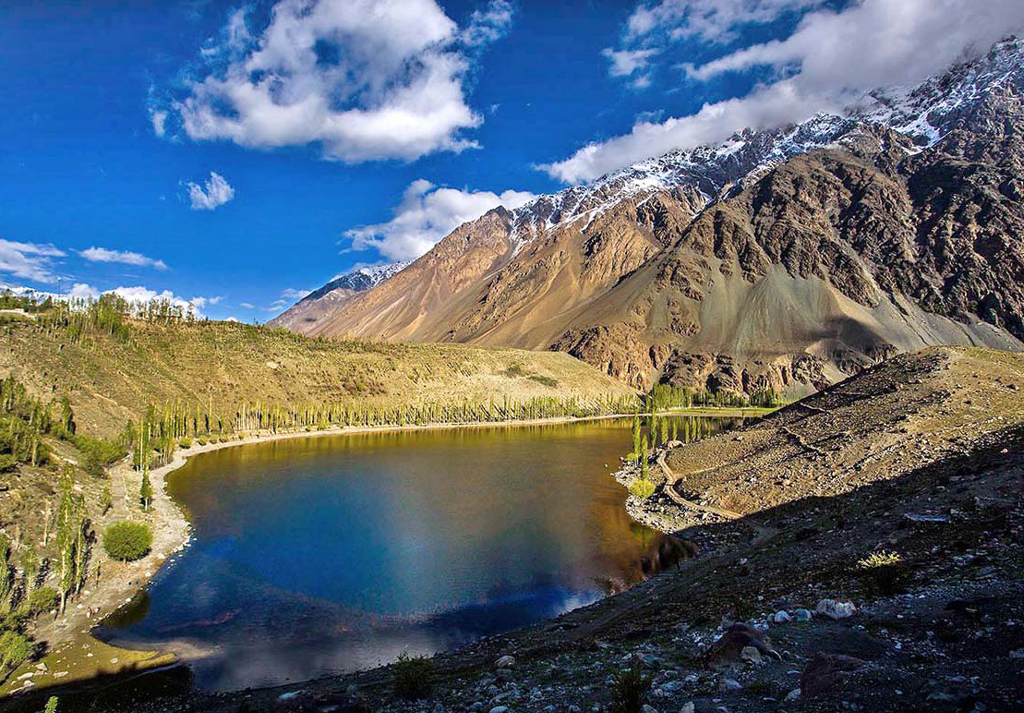
As we rode through the last stretch of Phander village, I turned for one last look. The valley lay peacefully under a soft drizzle, its green meadows glistening under the dawn light. The villagers were just beginning their day — smoke curling up from chimneys, a few children walking with schoolbags, and the faint clinking of cowbells echoing off the cliffs.
“Goodbye, Phander,” I murmured to myself. “We’ll meet again.”
I couldn’t help but recommend this place to anyone with a heart for beauty. Phander is one of those places that stays with you — where every turn in the road feels like a painting come to life.
Daylight on Familiar Roads: Phander to Gupis
This was my third time on the road from Phander to Gupis, but the first time in daylight. The earlier two times had been at night — dark, silent, and mysterious. Seeing it in sunlight felt like meeting a familiar friend for the first time.
The road wound gently through green valleys and clusters of stone houses. Every few kilometers, we passed a small village — children waving, elders sitting by the roadside, women filling buckets at mountain springs. That’s one of the things that make Ghizer Valley special: every five kilometers or so, another settlement greets you, and each feels alive with its own quiet charm.
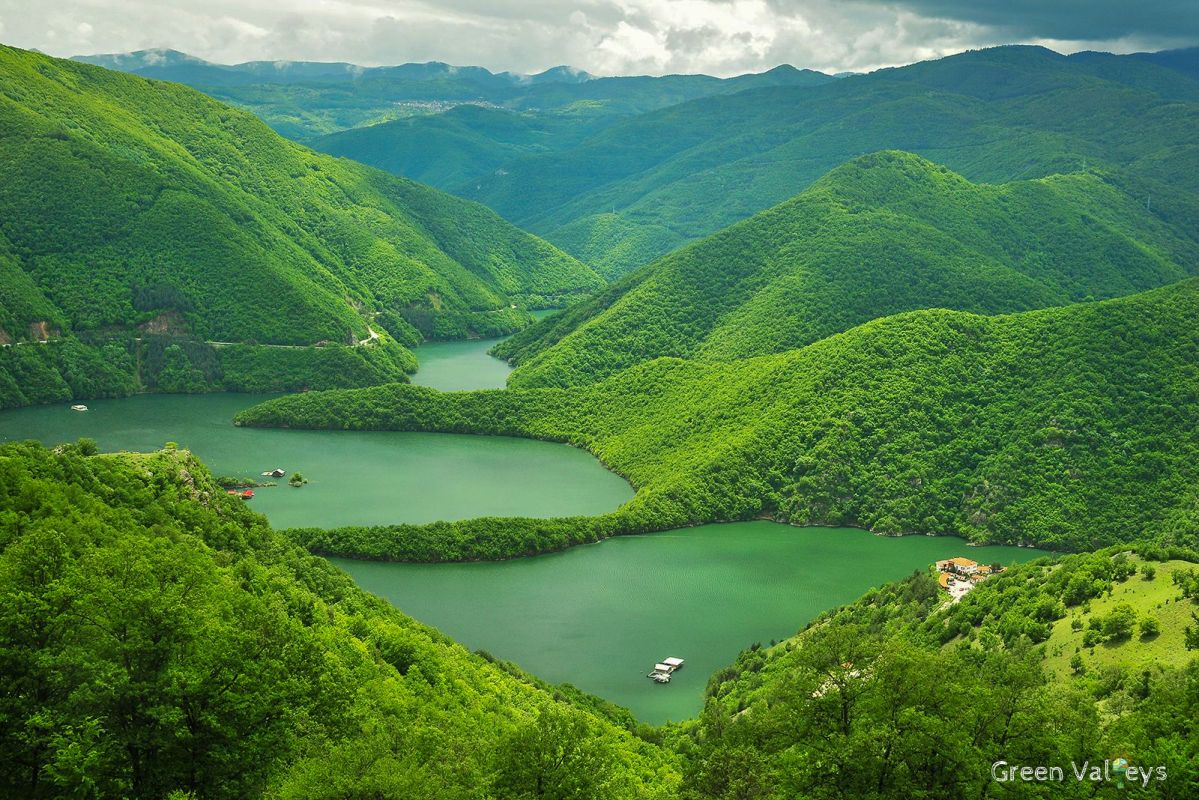
The air was fresh, cool, and damp. The rivers ran fast and clear, singing against rocks polished smooth by time. Every turn offered a new view — a different face of the same beauty.
I realized something that morning: riding early changes everything. The world feels unspoiled, the roads are empty, and the sun paints the mountains in soft golden hues.
Village Life and Morning Streams
We passed a cluster of makeshift cable cars — small metal boxes strung on steel wires, swinging across the roaring river. Villagers used them to cross from one side to another, saving hours of walking. It was both fascinating and terrifying to watch.
Children on their way to school waved at us. Their laughter echoed across the valley. One group told us they were heading to a bigger school in Thangy, a larger village nearby. Their spirit was infectious. Life here was simple, but it radiated happiness in its purest form.
We rode through another stretch where workers were blasting rocks to widen the road. Dust filled the air, and bulldozers growled as they chewed through the cliffs. We had timed it well — any later and we’d have been forced to stop for hours.
Gupis: A Rest by the River
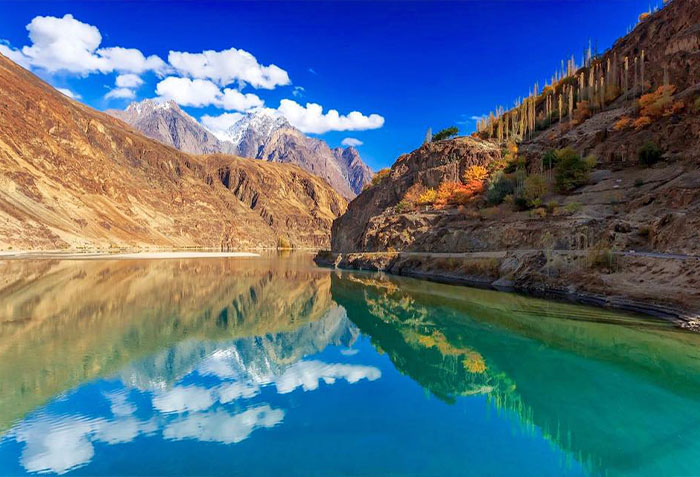
After about an hour and fifteen minutes of riding, we rolled into Gupis — a small town nestled by the confluence of rivers. We parked our bikes near a roadside shop. The air smelled of wet earth and tea.
Our first break of the day.
The river water was muddy brown from recent rains in Yasin Valley, yet the contrast with a nearby stream of crystal-clear water was striking. Nature, in all its moods, had painted a vivid masterpiece before us.
Through the Bustle of Gilgit
By late morning, the valley opened up, and soon we reached Gilgit City — bustling, lively, and slightly chaotic after the quiet of the mountains. Traffic thickened. Shops lined the roads. Army cantonments stood behind barbed fences.
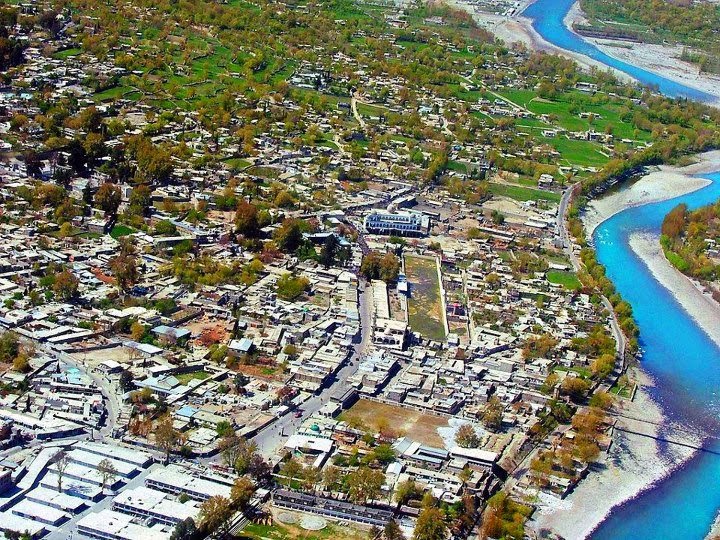
It was hot — the kind of dry heat that makes your riding jacket feel like an oven.
We stopped for cold coffee at a local café. A friendly man named Imran, a fan who recognized our motorcycles from our vlogs, joined us. “Because of you, people travel here,” he said, smiling.
Heat and Adventure: Gilgit to Chilas
After our brief coffee break, we pushed on. The sun was high, and the heat was relentless. The road from Gilgit to Chilas tested our endurance — the asphalt shimmering, the landscape dry and rugged.
One strange thing about this area: almost every restaurant or hotel had speed breakers right in front of their entrances — some made of dirt, others of stones. “To slow down travelers,” one local explained. It made no sense, especially at night when they could cause accidents.
The Climb to Babusar Top
Leaving Chilas behind, the landscape transformed dramatically. The barren, sun-scorched plains gave way to winding roads that carved through the mountains like ribbons of black silk. The temperature dropped with every turn, and the once-hot wind was replaced by a crisp, invigorating chill that made my lungs feel alive. Snow-capped peaks began to appear in the distance, their jagged edges cutting sharply into the sky, glinting faintly as the sun peeked from behind drifting clouds.
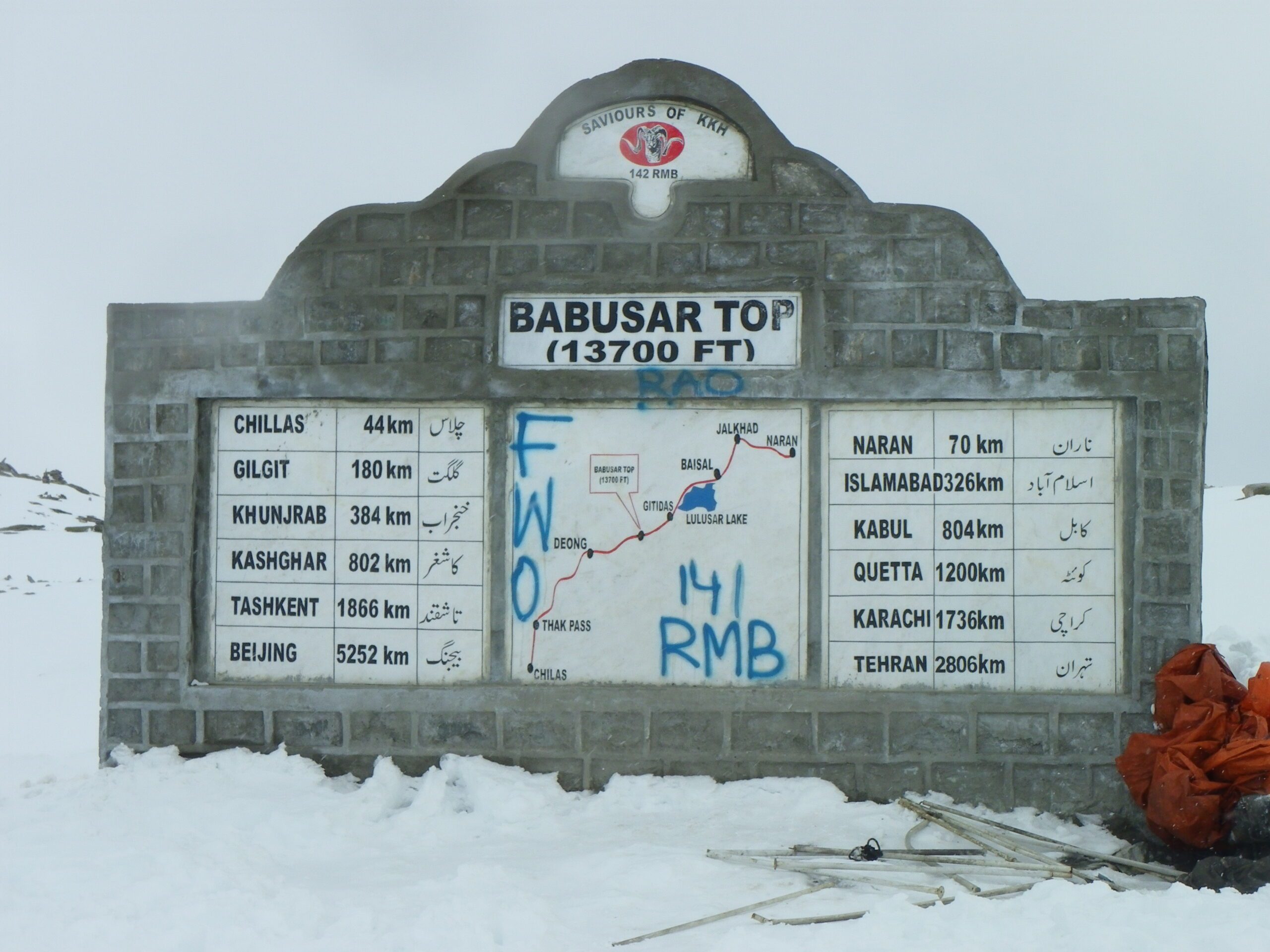
The climb itself was both exhilarating and challenging. Our 150cc motorcycles, reliable as ever, struggled up some of the steeper slopes. Every gear shift required precision, every corner demanded focus. The road was narrow in places, hugging cliffs with sheer drops that fell into valleys below. One wrong move here would have serious consequences, but the thrill of the ascent outweighed any fear.
Along the way, we passed locals collecting snow from a glacier, filling sacks to carry down to the villages below. Their resilience was humbling — despite the cold, the altitude, and the steep climb, they moved with practiced ease, accustomed to these harsh but stunning surroundings.
The scenery continued to shift with each kilometer. Dense forests gave way to open meadows dotted with wildflowers. Streams tumbled down the slopes, their icy waters sparkling under the intermittent sunlight. Occasionally, we stopped to let the view sink in — a vast panorama of valleys, distant peaks, and winding roads stretching toward the horizon.
As we neared Babusar Top, the clouds thickened, drifting low enough to brush against our helmets. The top itself was a breathtaking sight. From this vantage point, the world seemed to unfold endlessly in every direction — a patchwork of forests, meadows, and rivers, all wrapped in mist and framed by the towering mountains. The temperature here had dropped sharply compared to Chilas, and the wind cut through our jackets like a knife, invigorating yet merciless.
Despite the cold and the exertion of the climb, reaching the summit was a moment of triumph. The road had tested our endurance, our skill, and our patience, but the reward was immense. From this high perch, I could see valleys merging into rivers, roads curling through the mountains like threads, and the clouds hanging low, heavy and soft, almost within reach.
The summit was lively, too. Tourists strolled around, some on bicycles, others queued for ziplines or small food stalls. The contrast of human activity against the grandeur of nature was striking — people laughed, posed for photos, and shared the view, but the mountains remained unshaken, timeless, and majestic.
Standing at Babusar Top, I felt a deep sense of awe and gratitude. Every mile from Phander, every twist of the road, and every challenge of the climb had led to this — a moment where the beauty, power, and serenity of the mountains converged perfectly. It was more than just a ride; it was a journey of the senses, a test of spirit, and a reminder of the incredible landscapes hidden within northern Pakistan.
Encounters at the Summit
At the top, a family approached us, recognizing me from my vlogs. Their children waved shyly, while the parents shared their journey from Gujranwala. The warmth and kindness of people we met throughout this trip made every mile of the journey unforgettable.
A kind family driving by offered us cups of coffee, further enhancing the sense of community in these remote mountains.
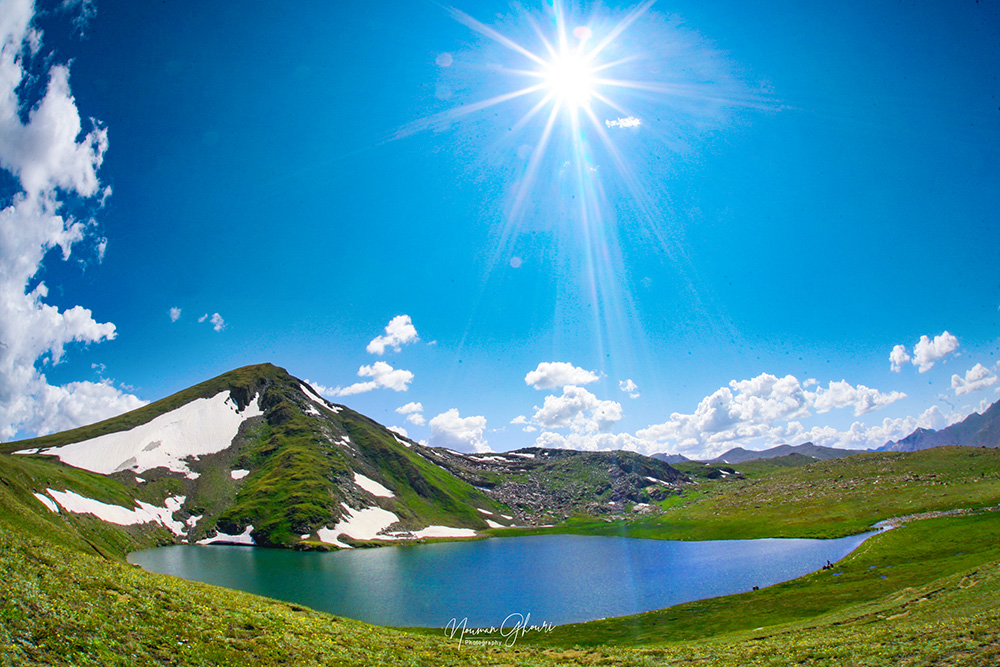
I sent my drone soaring nearly 4.5 kilometers to capture footage of Sambaksar and Dharamsar Lakes, hidden partially under clouds. The ethereal beauty was a reward for the long, challenging ride.
Descent, Rain, and Lulusar Lake
Leaving the summit of Babusar Top was like stepping from a frozen dream into a moving landscape. The wind was sharp, biting at my exposed skin, and the temperature had dropped drastically from the sweltering heat of Chilas just a few hours earlier. Clouds clung to the peaks, low and heavy, shrouding the valleys below in a soft gray veil. I could feel droplets of mist kissing my face as I adjusted my helmet, preparing for the long downhill ride.
Almost immediately, the weather shifted. The clouds thickened, and before long, rain began to pour — first in a drizzle, then heavier, relentless sheets that blurred the edges of the road and splashed against the windscreen of our motorcycles. Visibility dropped, and the winding mountain road became slippery under our tires. Each turn demanded careful balance, a steady hand, and constant attention to the white lines that seemed to vanish in the downpour.
For nearly an hour, Ali and I rode through the storm, our jackets soaked, gloves saturated, and boots squelching with each step on the wet pedals. The roar of the rain against our helmets and the constant rush of the river below created a strange symphony, one that was both exhilarating and exhausting. At moments, the wind threatened to push us sideways, and every corner carried the tension of the unknown — a hidden rock, a sudden puddle, or a bend obscured by fog.
Then, through the mist, we glimpsed Lulusar Lake — turquoise waters partially hidden beneath a soft shroud of clouds. The contrast of the icy blue water against the gray sky and dark green slopes was mesmerizing. It felt almost unreal, as though we had stumbled upon a hidden painting in the mountains. Despite the chill and the rain, we couldn’t resist stopping. Parking our bikes on the side, we stepped out to drink in the ethereal beauty. The wind tugged at our wet clothes, and droplets fell from our helmets, but the scene before us was worth every shiver and every soaked layer.
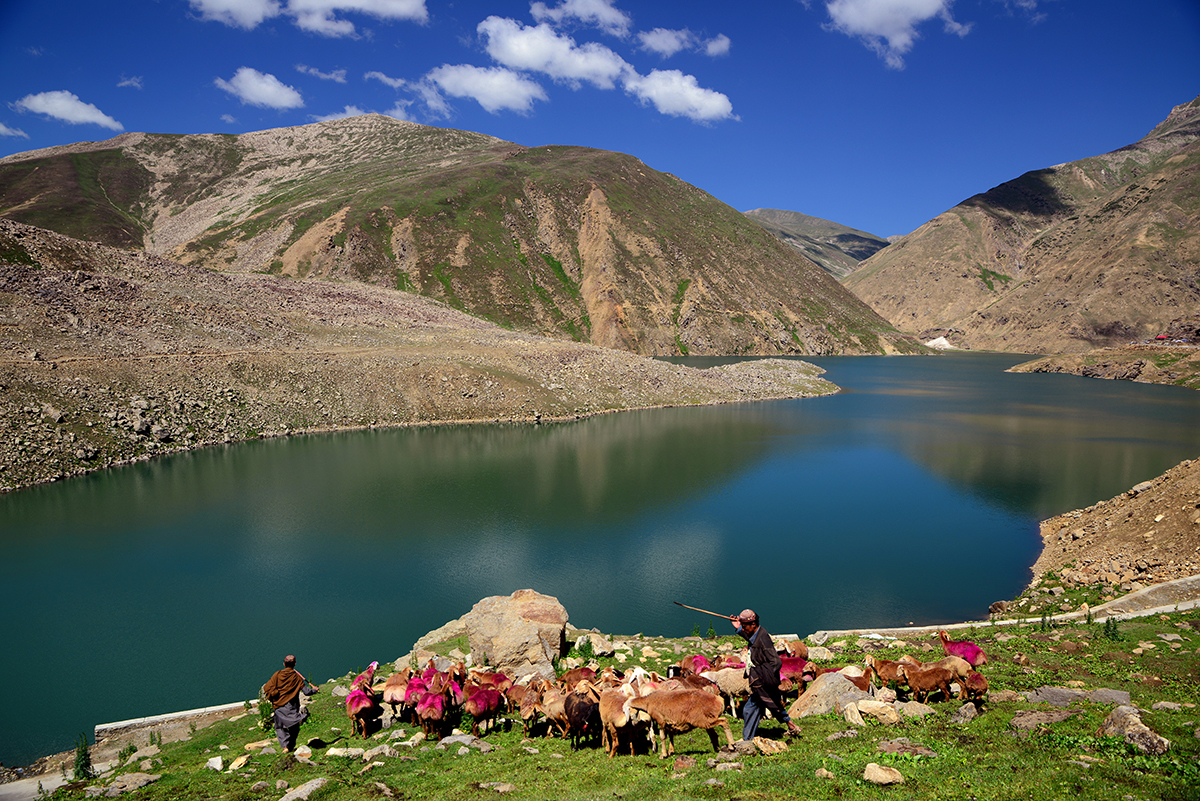
The lake, calm yet commanding, mirrored the clouds above, creating a perfect, haunting reflection. A few hardy birds skimmed the surface, leaving gentle ripples that distorted the mirrored sky. I crouched by the lakeshore, letting the cold water seep into my fingers, feeling the raw energy of this untouched place. It was a moment of stillness in the chaos of the ride — a reminder of why we traveled these roads, braved the rain, and chased the mountains in the first place.
After a brief pause to capture the scenery with my camera and drone, we mounted our bikes once again. The rain had softened but continued to drizzle intermittently, leaving the road slick and the atmosphere heavy with the scent of wet earth. The descent resumed, slower this time, careful and measured, as we navigated the final stretch toward Batakundi. Each turn revealed new glimpses of the valley below — forests darkened by the rain, rivers swollen with melted snow, and the winding ribbon of asphalt that would take us to our resting place for the night.
By the time we reached Batakundi, our clothes were thoroughly drenched, and our motorcycles were splattered with mud. Yet, there was a sense of accomplishment and exhilaration that only a ride like this could provide. The storm had tested our endurance, our focus, and our resolve, but it had also rewarded us with unforgettable vistas — a mix of danger, beauty, and raw mountain power that lingered in our minds long after the engines had cooled.
Rest and Reflection in Batakundi
By evening, we checked into the roomy hotel where we had stayed before — clean, warm, and welcoming. The first thing I did was take a long, hot shower. Ali spread our soaked clothes near the heater, and soon the room smelled of wet fabric and warmth.
Dinner was a comforting change: burgers and Chinese food after days of karrahi. We ate, laughed, and shared stories of the day’s journey.
Reflections on the Journey
Lying in bed that night, I reflected on the day — the long road from Phander to Batakundi, the changing weather, the beauty, the fatigue, and the unexpected kindness of strangers.
Northern Pakistan is challenging yet rewarding. Every bend in the road offers a new story, every encounter adds a friend, and every journey teaches patience, humility, and appreciation for life’s simple pleasures.
As rain tapped gently against the window, I whispered a prayer of gratitude. Tomorrow promised new landscapes and new experiences, but for now, I closed my eyes, content and grateful.








